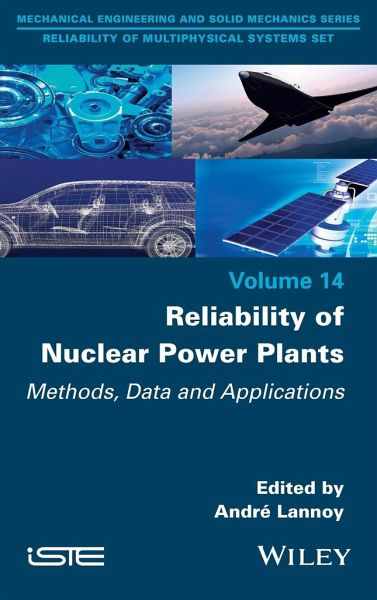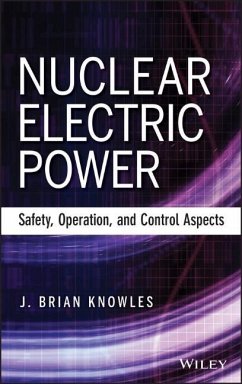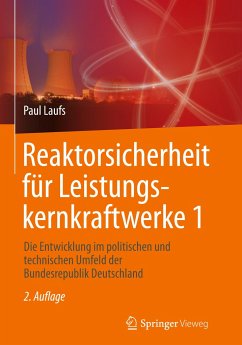
Reliability of Nuclear Power Plants
Methods, Data and Applications
Herausgegeben: Lannoy, Andre
Versandkostenfrei!
Versandfertig in über 4 Wochen
147,99 €
inkl. MwSt.
Weitere Ausgaben:

PAYBACK Punkte
74 °P sammeln!
Since the 1970s, the field of industrial reliability has evolved significantly, in part due to the design and early operation of the first generation nuclear power plants. Indeed, the needs of this sector have led to the development of specific and innovative reliability methods, which have since been taken up and adapted by other industrial sectors, leading to the development of the management of uncertainties and Health and Usage Monitoring Systems. In this industry, reliability assessment approaches have matured. There are now methods, data and tools available that can be used with confiden...
Since the 1970s, the field of industrial reliability has evolved significantly, in part due to the design and early operation of the first generation nuclear power plants. Indeed, the needs of this sector have led to the development of specific and innovative reliability methods, which have since been taken up and adapted by other industrial sectors, leading to the development of the management of uncertainties and Health and Usage Monitoring Systems. In this industry, reliability assessment approaches have matured. There are now methods, data and tools available that can be used with confidence for many industrial applications. The purpose of this book is to present and illustrate them with real study cases.
The book addresses the evolution of reliability methods, experience feedback and expertise (as data is essential for estimating reliability), the reliability of socio-technical systems and probabilistic safety assessments, the structural reliability and probabilisticmodels in mechanics, the reliability of equipment and the impact of maintenance on their behavior, human and organizational factors and the impact of big data on reliability. Finally, some R&D perspectives that can be developed in the future are presented. Written by several engineers, statisticians and human and organizational factors specialists in the nuclear sector, this book is intended for all those who are faced with a reliability assessment of their installations or equipment: decision-makers, engineers, designers, operation or maintenance engineers, project managers, human and organizational factors specialists, experts and regulatory authority inspectors, teachers, researchers and doctoral students.
The book addresses the evolution of reliability methods, experience feedback and expertise (as data is essential for estimating reliability), the reliability of socio-technical systems and probabilistic safety assessments, the structural reliability and probabilisticmodels in mechanics, the reliability of equipment and the impact of maintenance on their behavior, human and organizational factors and the impact of big data on reliability. Finally, some R&D perspectives that can be developed in the future are presented. Written by several engineers, statisticians and human and organizational factors specialists in the nuclear sector, this book is intended for all those who are faced with a reliability assessment of their installations or equipment: decision-makers, engineers, designers, operation or maintenance engineers, project managers, human and organizational factors specialists, experts and regulatory authority inspectors, teachers, researchers and doctoral students.














